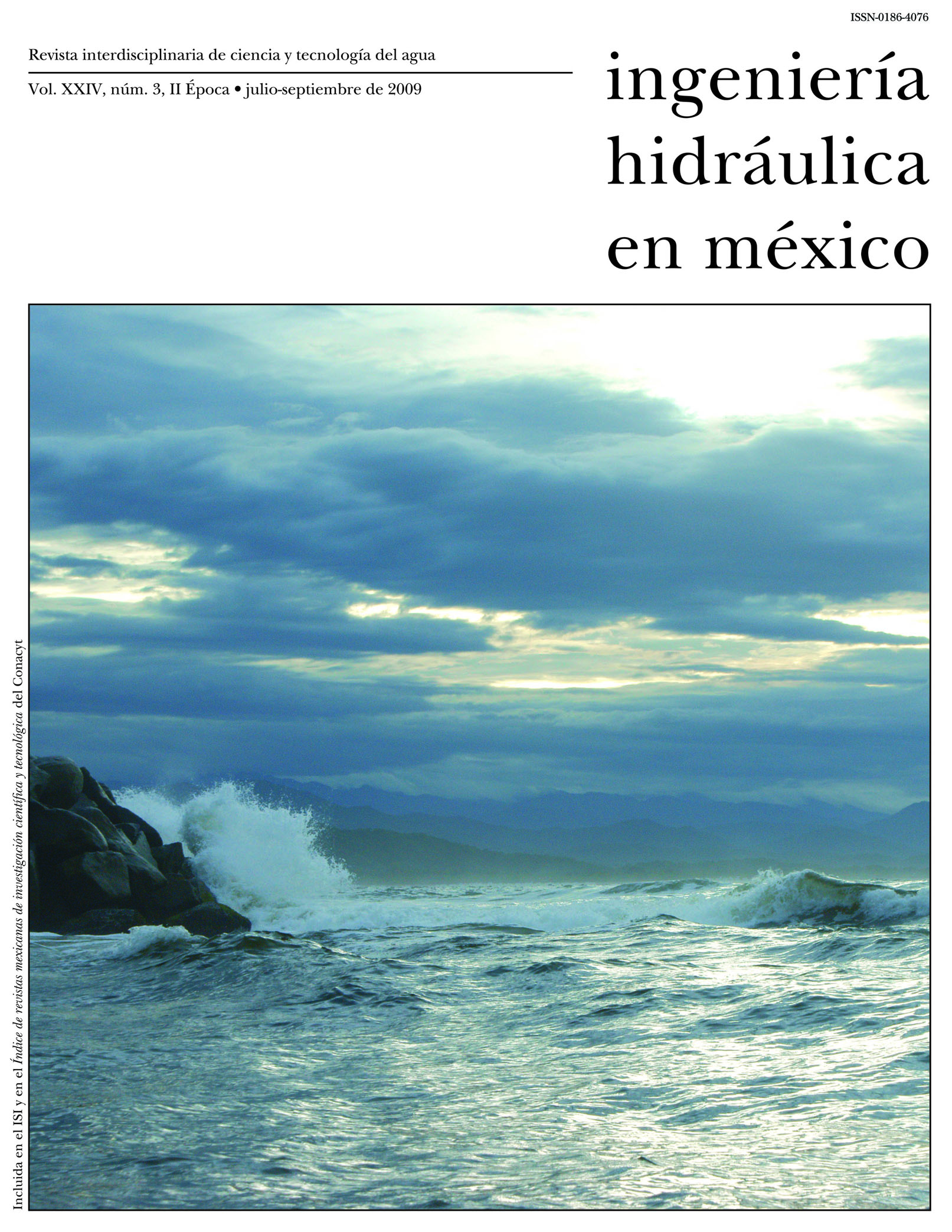A linear coregionalization model for rainfall spatial estimation in Mexico City valley combining rain gages data and meteorological radar images.
Keywords:
geostatistics, spatial rainfall estimation, cokriging, linear coregionalization model, meteorological radar.Abstract
Precipitation is one of the main factors of the hydrologic cycle and the knowledge of its spatial distribution is fundamental for flood prediction. Most of rainfall in Mexico City is produced by convective storms, characterized by high spatial and temporal variability, which makes its estimation more difficult. This paper presents a modification of the geostatistical procedure for spatial rainfall estimation introduced by Krajewski (1987), which applies ordinary cokriging, combining meteorological radar images with rain gage data. Here, unlike Krajewski's procedure, in the ordinary cokriging method, the joint radar-rain gage spatial dependence is considered by a linear coregionalization model. The proposed methodology is tested using radar and gage data from a storm that occurred in the Valley of Mexico, and the results are compared with ordinary cokriging, without a linear coregionalization model, and collocated cokriging methods.Downloads
Published
2009-01-01
How to Cite
Díaz Viera, M. A., Herrera Zamarrón, G. S., & Valdés Manzanilla, A. (2009). A linear coregionalization model for rainfall spatial estimation in Mexico City valley combining rain gages data and meteorological radar images. Tecnología Y Ciencias Del Agua, 24(3), 63–90. Retrieved from https://www.revistatyca.org.mx/index.php/tyca/article/view/99
Issue
Section
Articles
License
By Instituto Mexicano de Tecnología del Agua is distributed under a Creative Commons Attribution-NonCommercial-ShareAlike 4.0 International License. Based on a work at https://www.revistatyca.org.mx/. Permissions beyond what is covered by this license can be found in Editorial Policy.









